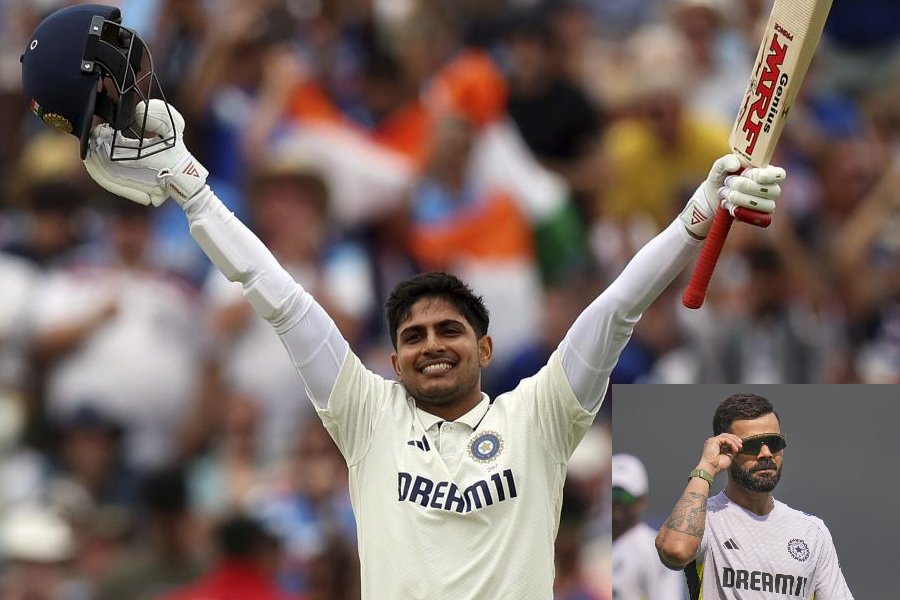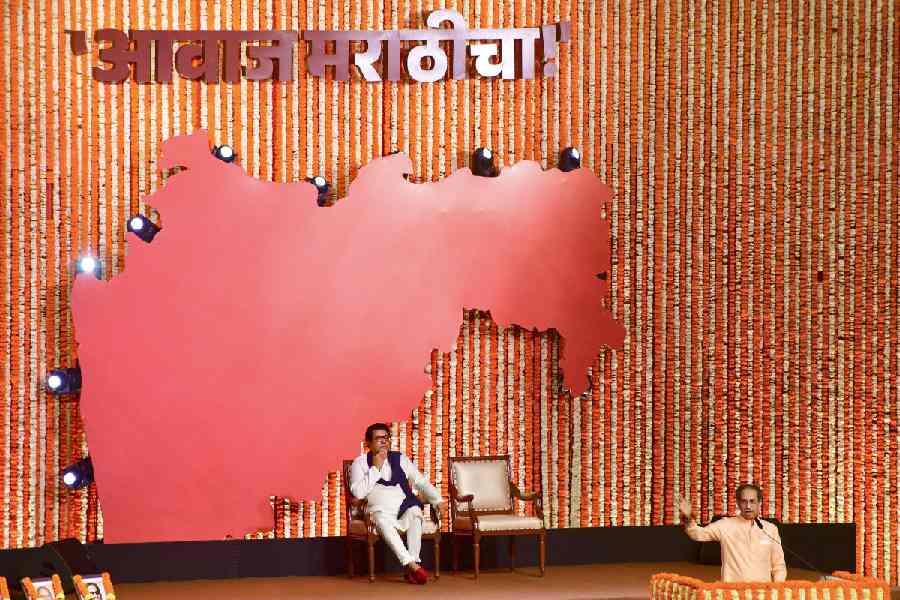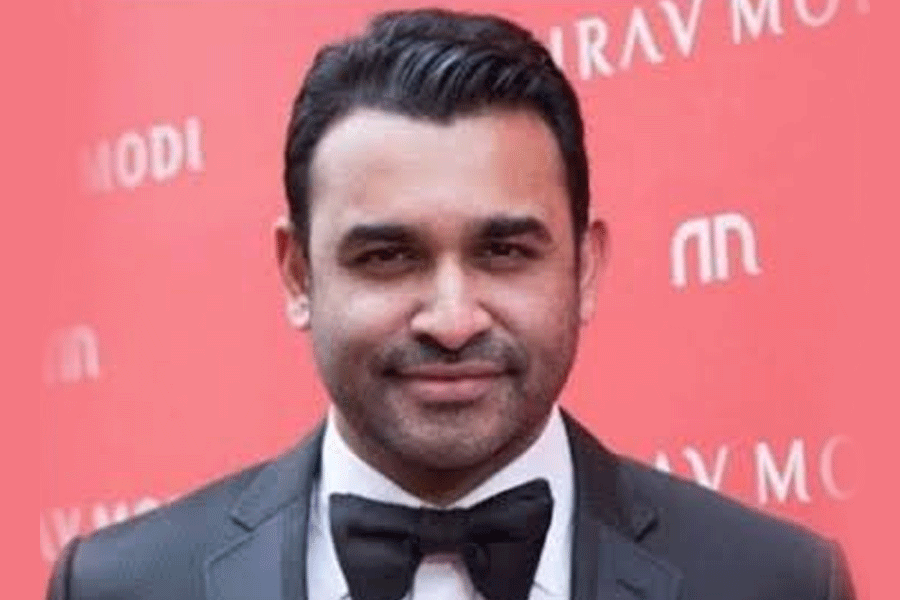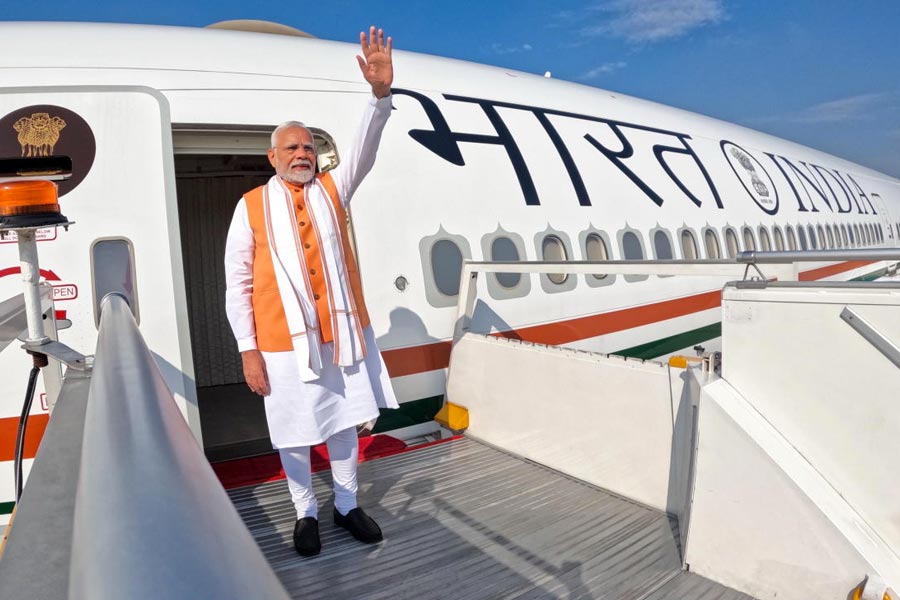 |
 |
 |
 |
| (From top) Malaika Arora in Kaante; Lara Dutta and Esha Deol in Kaal; Madhuri Dixit and Sunjay Dutt in Khal-Nayak; and Tata Young of Dhoom fame |
Location: Inside a movie hall. Light: Pitch dark (yeah, well, inside the theatre, what else?) Sound: The characters onscreen are openly noisy, the characters around, slyly so (every film has at least one loud popcorn cruncher and this one being a suspense thriller, by default at least five popcorn crunchers have to be in the hall). The next seats are taken by two latecomers. The lady grumbles to her companion that she’s missed the beginning of the first film she’s seeing in five years! A few more grunts and we’re settled again. Halfway through the film, she suddenly sits up, looks around. Worriedly, she says to no one in particular, “There’s no song in this film.” But there’s a tiger, we want to reassure her.
She’s right. Karan Johar’s Kaal is one of the new age films that have dispensed with the quintessential song-and-dance sequence in the narrative. However, the sizzling tracks at the two ends of the film make sure nothing’s missing. Shah Rukh Khan has done some serious dhamaal in Is Kaal? his first-ever Item Boy performance that showcases the beginning credits (Shakti, with Aishwarya Rai, was in-film). The trend of an item number with the titles was put into first gear by director Ram Gopal Varma, of course, the reinventor of the item song, anyway. Urmila Matondkar graced the credits of his film, Company, with her patently sultry moves. Many have followed Ramu’s example, using item numbers as promotional videos and as credits decoration. Later, there was a TV promo song sung and danced by Sunidhi Chauhan for Bhoot, which did the vanishing trick in the film.
Aditya Chopra’s recent multistarrer, Dhoom, ended with the hot Tata Young doing a mean ‘Diooom diooom’ act and setting the male audience on fire. No other film has kept such a large part of the audience in the theatre for the end credits. Varma has always been something of a trendsetter. Before pushing them to the extremes of the reel, he also reinvented the song and dance sequences of Bollywood, so to speak.
The first ‘item number’ as we know it today, exploded in our faces with the inflammable Ishaa Koppikar creating hot water waves in Khallas?(Company). Suddenly, a whole pack of item girls was unleashed, mostly by Ramu himself. Every film produced a new item number and along with it, a new item-bomb, which even became a the next big thing on TV reality contests. If some gorgeous scantily-clad diva doing the gyrations was not in your film, you stuck out. The item number was suddenly an entity, a separate package offered to the viewer. In many of the sorry excuses for films, the item number was the crowd-puller, the reason for whatever little business the films did. And now, some filmmakers cross the line, oozing sleaze in the name of item. Malaika Arora Khan, the Chhaiyyaan Girl, said, “If aesthetically done, item numbers can make a great impact. Item numbers earlier would and still can be a part of a script.”
Maybe not in name, but the item number has been around a long time. Whether it was Sonali Bendre gyrating to Humma humma in Mani Ratnam’s Bombay or Urmila Matondkar going Chhamma chhamma in Rajkumar Santoshi’s ChinaGate, they provided relief from the tension in the rest of the film. Choli ke peechhe? in Subhash Ghai’s KhalNayak, easily the most controversial item number in the history of Indian cinema, was brought alive on screen by Madhuri Dixit’s jhatkas. Madhuri was perhaps the first ‘good’ girl to do the item jig with her historic performance in Ek do teen? in N. Chandra’s Tezaab.
Post-Tezaab, the stage dance became as much the heroine’s domain as it had been the vamp’s. In the days of flower power, only the vamps were allowed suggestive shaking in shimmering leggings on tabletops in bars, wrapping themselves around a three-piece-suited shoulder. The good girls were allowed only a ringside view, if at all. However, with the change in the image of the contemporary woman, she can easily do all the seductive sashaying required, and then some more! The vamp is now forgotten. But the ‘bad’ dancing damsels command high ranks in the fondest film memories, thanks to the fantastic item numbers they boogied to. Aruna Irani and Bindu lead the bosom-heaving brigade during the 70s, making eternal such compositions as Dilbar dil se (Caravan) and Mera naam hai Shabnam (Kati Patang).
But the true dancing queen of Bollywood, the icon of disco, the original item girl of this country has been, and always will be Helen. She brought alive every man’s fantasy with her sensuous bar dances in immortal songs like Aa jaane ja (Inteqam) and Piya tu (Caravan). Then, there was the inescapable adrenalin rush of Mehbooba?.(Sholay). Most of her song sequences were exquisite in their filming and choreography, and watched for their elegance even by the females in the audience. Another word for the song and dance sequence for close to two decades was Helen. “I was dancing in those daring outfits right till the age of 42. Today’s girls are out by the time they’re 30,” she recently commented.
The thrillers, being whipped up during the time R.D. Burman churned out his Indian take on Western music, provided ample bar and villain-den floors for the twinkling toes of Helen and the likes. However, those films that were not of this genre still had to have song and dance routines. No Indian film was complete without the ritual.
And seldom is, even today. In the black- and-white days, K.L. Saigal sat under a tree and wailed soulfully for his sweetheart, Balam aao baso mere, in P.C. Barua’s Devdas and the camera dared not move away from his forlorn face. But with the advent of playback singing, the camera broke free. It moved to more adventurous pastures and green fields, sometimes even the hills of Kashmir. And with the advance of South Indian cinema influence on Bollywood, the extras (later rechristened junior artistes or chorus girls) dancing on gigantic drums stormed into the world of Bollywood, ghungroos tinkling dangerously. It has been with Herculean effort and after years of freedom struggle that the drums have been pushed off the silver screen. However, the chorus dancers still remain.
When the lovers in our films run to havens for that much awaited duet, they find the obscure hillocks infested with these creatures, who invariably dress strangely. Then there, those head-in-the-Swiss Alps-clouds-we-are-so-happy-we-don’t-feel-cold-in-chiffon melodies dripping honey. In these, the couples (minus the extras!) dance so, that you wonder if you’re missing some beat they can hear. But the feel-good flavour in them is delicious, courtesy Yash Chopra and troupe. We also have the situation-born song and dance. We sing and dance on Holi, Diwali, birthdays, Valentine’s Day, rainy day, sunny day?..and oh, how we sing and dance on weddings, no matter whose!
So, like we’ve been singing all this while (and almost dancing), the song and dance routine is the most ingrained need of Bollywood. Sometimes, more urgent than a script. Hollywood thinks all Bollywood films are musicals! It was unthinkable till a few years ago to make mainstream cinema without the ritualistic jigs. Even Aamir Khan and Ashutosh Gowariker insisted on retaining every little sur and undulation in the rather long Lagaan when it was up for the Oscars. But the new crop is more exploratory, sometimes a budgetary evil. Some of the remarkable cinema (read: Mr & Mrs Iyer, White Noise, Rockford, Ek Hasina Thi) has been created without elaborate song sequences.
For many filmmakers today, compromising with realism undermines their creative satisfaction. But for the majority of us, going to the movies still means popcorn, giggles, tears and lots of songs and dances. Anu Malik’s declaration ? no music, no Hindi cinema ? holds true for most of us. Hence, some directors meet us halfway. If you like the songs in the promos, stay back for the credits.
Just like the lady sitting in the next seat in Kaal did. When the song, Tauba tauba, appeared onscreen with the end-credits, she smiled contentedly and slid lower in her seat, making herself comfortable. We kept recalling Shaad Ali’s words challenging anyone to see the rap number of Amitabh Bachchan in Bunty Aur Babli and read the end credits at the same time...










